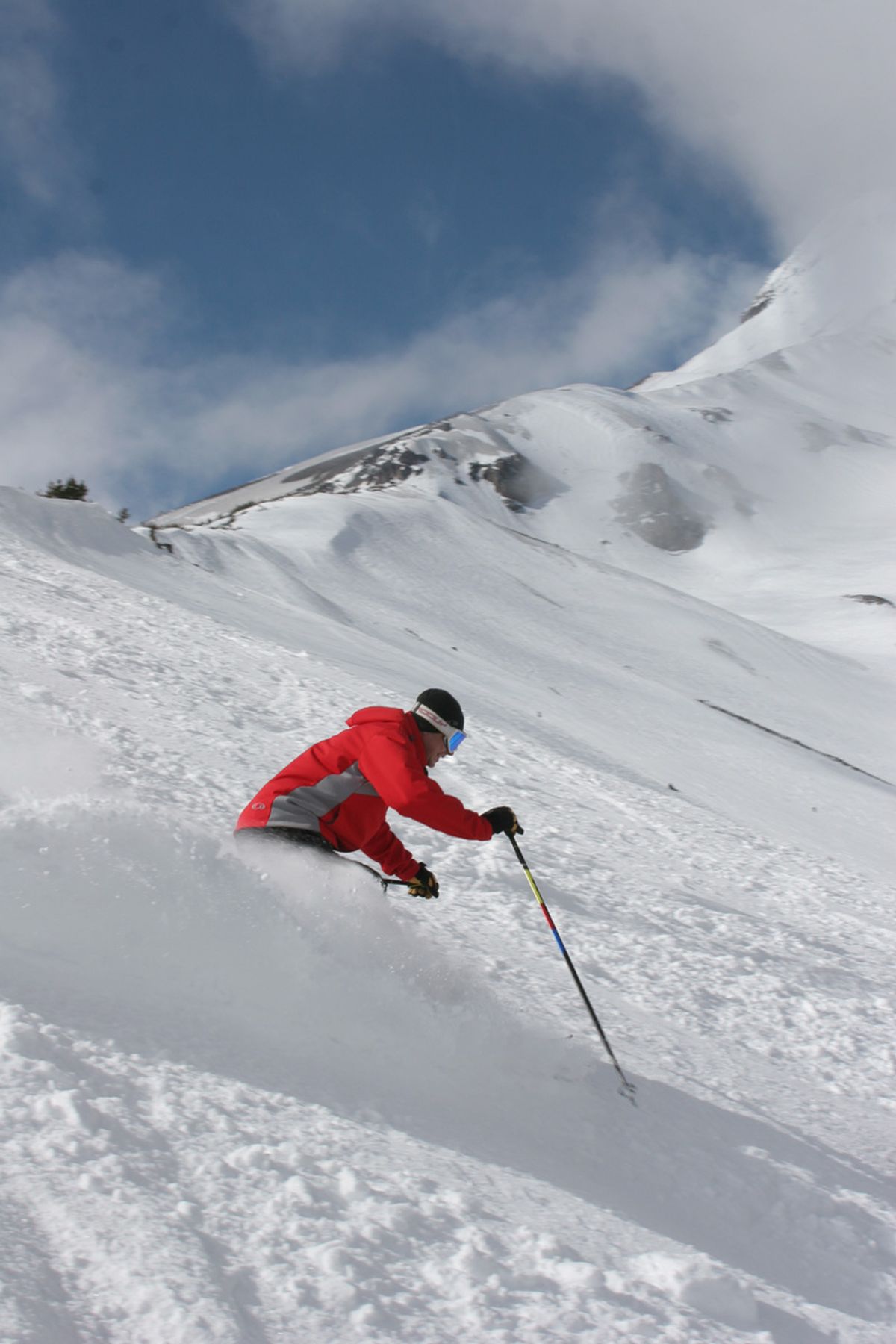Oregon ski resorts working to stay green and white
Sustainability becoming larger focus of winter destinations

While the debate over climate change rages on in the minds of many Americans, some Northwest businesses whose survival depends on cold, white winters have seen the light and are leading the way in implementing sustainable practices intended to reduce carbon output and protect winter.
Enter two of Oregon’s most popular winter recreation areas: Mt. Hood Meadows and Mt. Bachelor. Both areas feature a great mix of terrain and ballistic annual snowfall that helps attract thousands of visitors each year. Within the past decade, both have become concerned about the threat of climate change and are increasingly active in implementing environmental programs.
“Mt. Bachelor is committed to reducing our carbon footprint and doing what we can to ensure that we keep our winters white,” said Tom Lomax, director of mountain operations at Mt. Bachelor.
“We believe reducing energy usage and recycling what we can is the right thing to do. As an outdoor business, we feel our guests expect us to be leaders in this area and they are generally supportive of programs they know about. Many projects are behind the scenes and have no public exposure. The big bonus is that reducing carbon emissions has wound up helping our operational efficiency in many areas.”
The same thinking is in play at Mt. Hood Meadows.
“Climate change is definitely a major concern,” said Heidi Logosz, sustainability manager at Mt. Hood Meadows. “Keeping recyclable materials and trash off the hill is nice for aesthetics, but we’re very concerned about climate change and our efforts as a whole are intended to do something about it.”
Taking a serious approach to what the ski areas see as a growing threat has led them to implement multifaceted environmental programs. Some of the notable areas where carbon footprint is being addressed are: electricity use, fuel, transportation issues, sustainable slopes and recycling.
“Electricity to run the lifts is easily the largest part of our carbon footprint,” Lomax said. “By far the biggest impact in carbon reduction comes from wind power offsets we purchase,” Lomax said. “If we use 10,000 kilowatts from the grid, we purchase the equivalent kilowatts in wind power to be fed back into the grid.”
The same holds for Meadows, which will hit 100 percent renewable power use in 2011 via offset purchases. On the flipside, Meadows conserves power by shutting down some lifts on days when ridership is low, typically week days.
Meadows visitors also have the option of buying $2 SkiGreen offsets when they buy their lift ticket. Each SkiGreen offset represents 100 kilowatt-hours of wind energy production and offsets approximately 150 pounds of greenhouse gas emissions, equivalent to the impact of driving an average car for roughly 150 miles.
“Ideally, I would like to see more of our visitors arriving by shuttle bus,” Logosz said. “It’s a greener way to get to the mountain than coming by car. But we understand people like to come and go as they please, which means they like their cars.
The SkiGreen offset program is one way for people who come by car to offset the carbon footprint they create driving up here and it’s fairly popular. We are continually looking at ways of making the shuttles more attractive to visitors, including incentives on lift tickets, rental packages and food.”
At Mt. Bachelor, getting employees and guests to the mountain by shuttle diverts an estimated 1.7 million vehicle miles from the road. The shuttles, along with other equipment on the mountain, run on biodiesel, reducing carbon emissions by some 7 million pounds annually.
“Using biodiesel in the shuttles, snowplows and grooming equipment is second behind the wind power offset program in terms of impact,” Lomax said. “Along with the reduction in greenhouse gas reduction, we’ve been pleased by the fact that we’ve seen no drop in the performance of the equipment using biodiesel.” The company began using recycling cooking oil for biofuel production last year.
Another of the significant efforts at both locations is the No Idling or Know Idling program, based around the idea that non-essential vehicle idling is a significant contributor to greenhouse gas production.
“Our goal is to make our visitors aware of idling issue,” said Logosz. “Sometimes it makes sense for a car or bus to be left idling; sometimes it makes no sense at all and is bad policy. We don’t like to beat our visitors over the head. We just make them aware of the issue and hope they act accordingly, and it seems to be working.”
Finally, Meadows and Mt. Bachelor are both committed to sustainable slopes, myriad efforts designed to protect the alpine environment through erosion control, wetland restoration, nature seed collection and reuse, trash collection and recycling, water conservation and more.
“Pursuing green policies has been a positive thing for us and we occasionally see unexpected benefits,” Lomax concluded. “For instance, the high efficiency lighting we installed in the maintenance shop had the additional benefit of creating a brighter and better work environment for the mechanics.
Overall, we’re pleased with the progress we’ve made, the response we’ve received and where we’re headed with these initiatives.”
More more information on Oregon’s sustainability efforts, see the following links:
Mt. Bachelor: www.mtbachelor.com/site/info/environmental_program
Mt. Hood Meadows: www.skihood.com/About-Meadows/Environment.
For the Ski Area Citizens’ Coalition green rankings of ski resorts in the western US, follow this link: www.skiareacitizens.com/index.php.